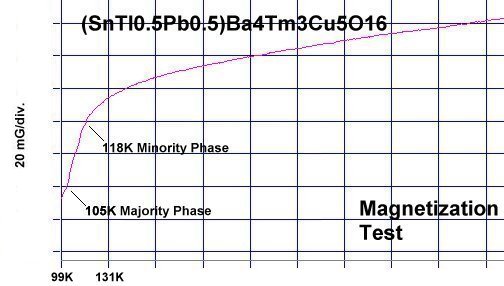

Superconductors.ORG herein reports more than 120 new superconductors have now been discovered since planar weight disparity (PWD) was found to be a key component of high temperature superconductivity in 2005 (list at page bottom). This suggests strongly that PWD is not just a Tc-enhancement mechanism, but an essential component of high temperature superconductivity in the copper-oxides.
The latest PWD discovery is a Sn-Tl-Pb-Tm oxy-cuprate with Tc near
105K (see plot page top). Within this material's 1223/1212 intergrowth structure (shown at left) exists PWD in both the C1 and C2 axes.
In the C1 axis (heavy) Thallium and Lead alternate with (lighter) Tin. And in the C2 axis, two Thulium atoms alternate with a single Thulium atom.
The discovery of PWD has made possible new formulations whose predominant weight is
shifted from the insulating layers to the CuO2 planes. And this has opened up a wealth of new superconductor possibilites. Since 2005 the application
of planar weight disparity has produced the first room-temperature superconductor and
10 improved versions of the industrial superconductor YBCO. The first resonant superconductor
and the first high-temp reentrant superconductor have also resulted.
Re-examining older superconductors also shows that PWD exists in the well-known
legacy structures from the 1980's (see below graphics).
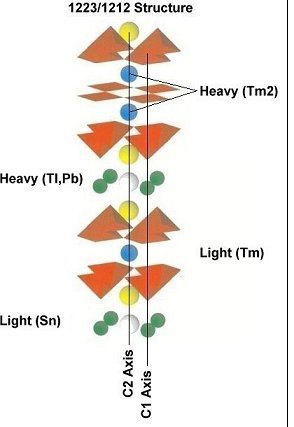
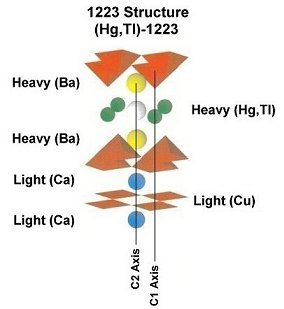
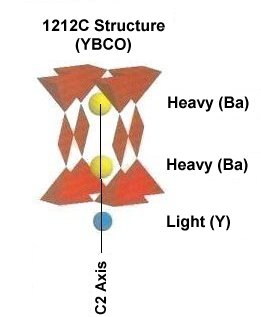
The list superconductors created through the application of PWD is shown below.
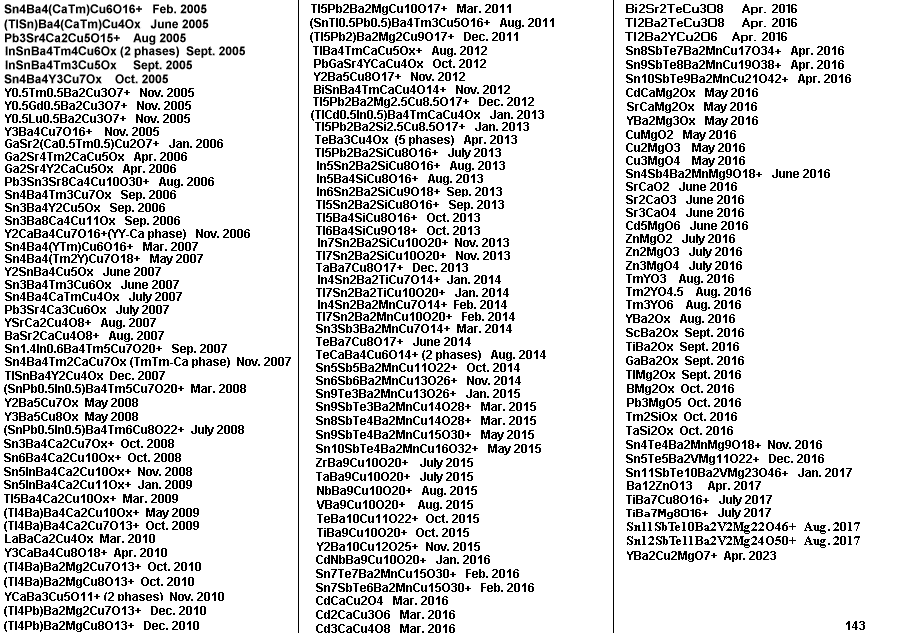
RESEARCH NOTE: The copper-oxides are strongly hygroscopic. All tests should be performed immediately after annealing.
E. Joe Eck
© 2011 - 2026 Superconductors.ORG
All rights reserved.
 BACK to "News" page at Superconductors.ORG
BACK to "News" page at Superconductors.ORG